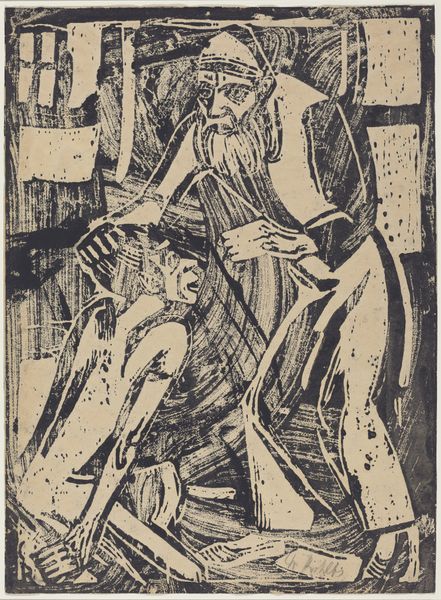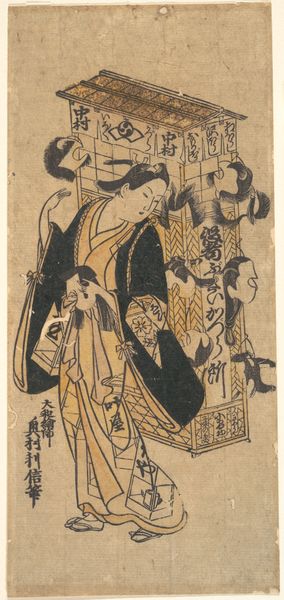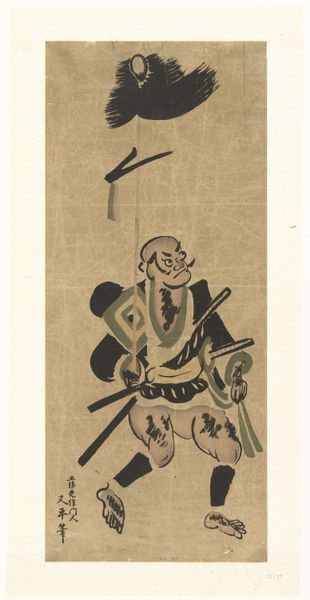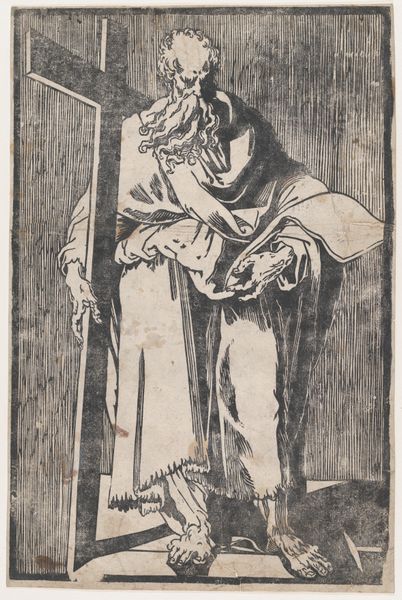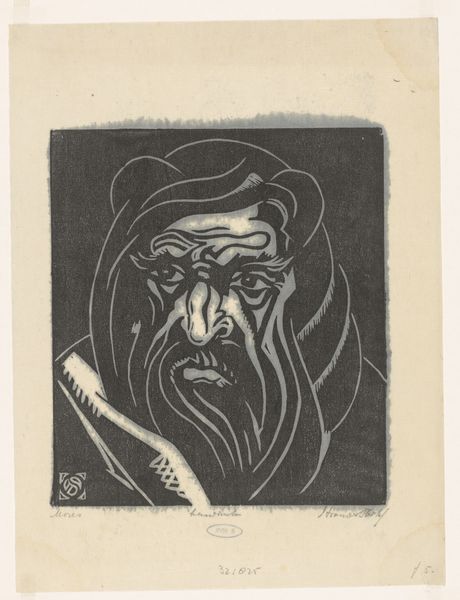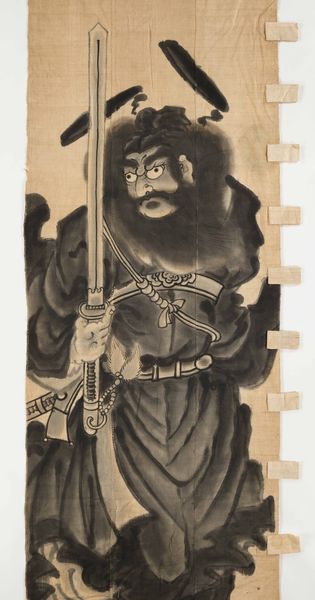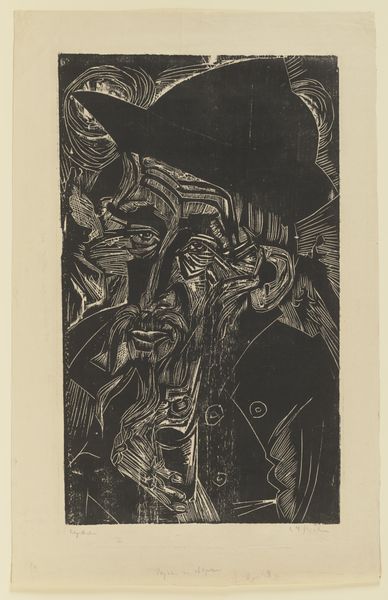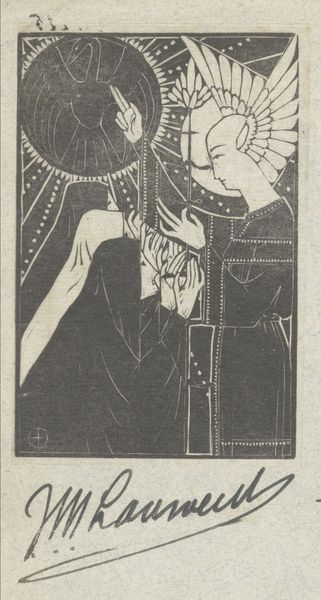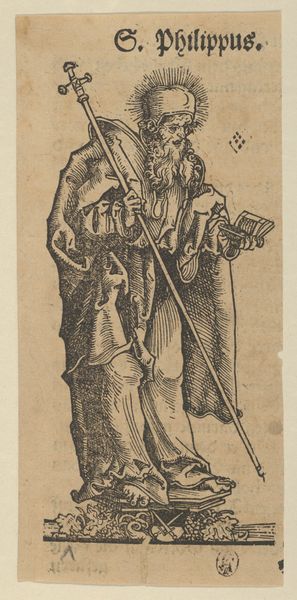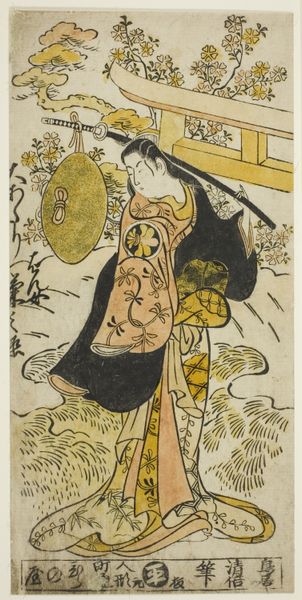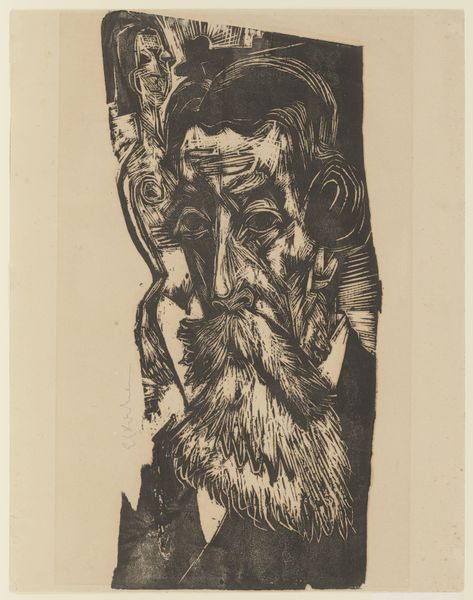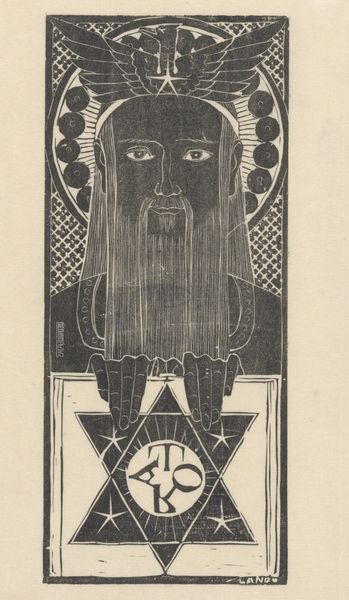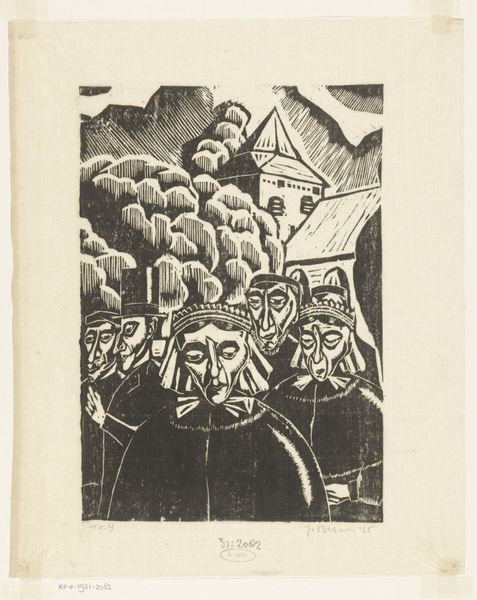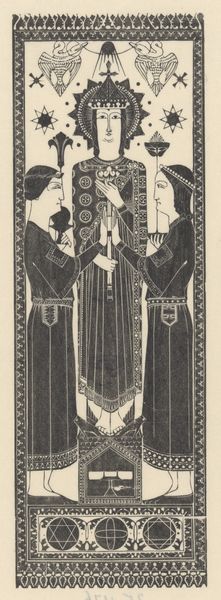
print, woodcut
# print
#
old engraving style
#
landscape
#
figuration
#
geometric
#
woodcut
#
symbolism
Dimensions: height 568 mm, width 394 mm
Copyright: Rijks Museum: Open Domain
Editor: This striking woodcut, "Aartsvader," created between 1880 and 1932 by Henri van der Stok, really catches my eye. There’s such a strong contrast between the black and white, giving it an almost ancient feel. I’m curious, what narratives do you find emerging from this print? Curator: Ah, yes. I feel in this work an intense invitation to contemplation on the origins of our selves. Doesn't it strike you as a little mischievous? The stark contrast Van der Stok employs creates such a drama. The almost geometric representation of the patriarch, looming over a landscape of what appears to be… tents, mountains? He seems less a benevolent father and more like a gatekeeper. I find myself asking, "What wisdom does he guard, and what price does he demand for it?" Do you see what I mean? Editor: I do. I was focused on the ‘father’ aspect, but now I see the gatekeeper idea much more clearly. He does seem to guard the pathway behind him. Maybe that's why he’s so stern. Is the landscape perhaps a spiritual one? Curator: Precisely! Or a metaphorical journey. Look at those pyramidal forms – not quite mountains, not quite buildings. A landscape of the mind, perhaps? Maybe the tents below could represent transient thoughts? Van der Stok uses simplicity to invite complexity. A lovely paradox, isn't it? It reminds me of a half-remembered dream. Editor: It definitely changes my perception. At first, I just saw an old man in a stark landscape. But seeing him as a gatekeeper, guarding a symbolic path, it becomes so much richer. Curator: Wonderful. What started as starkness now blooms, even within the woodcut’s intense black and white! The world reshapes itself before our very eyes, doesn't it? And so does the art. Editor: Absolutely. This close looking at this old print has made it new to me. Thank you!
Comments
No comments
Be the first to comment and join the conversation on the ultimate creative platform.
